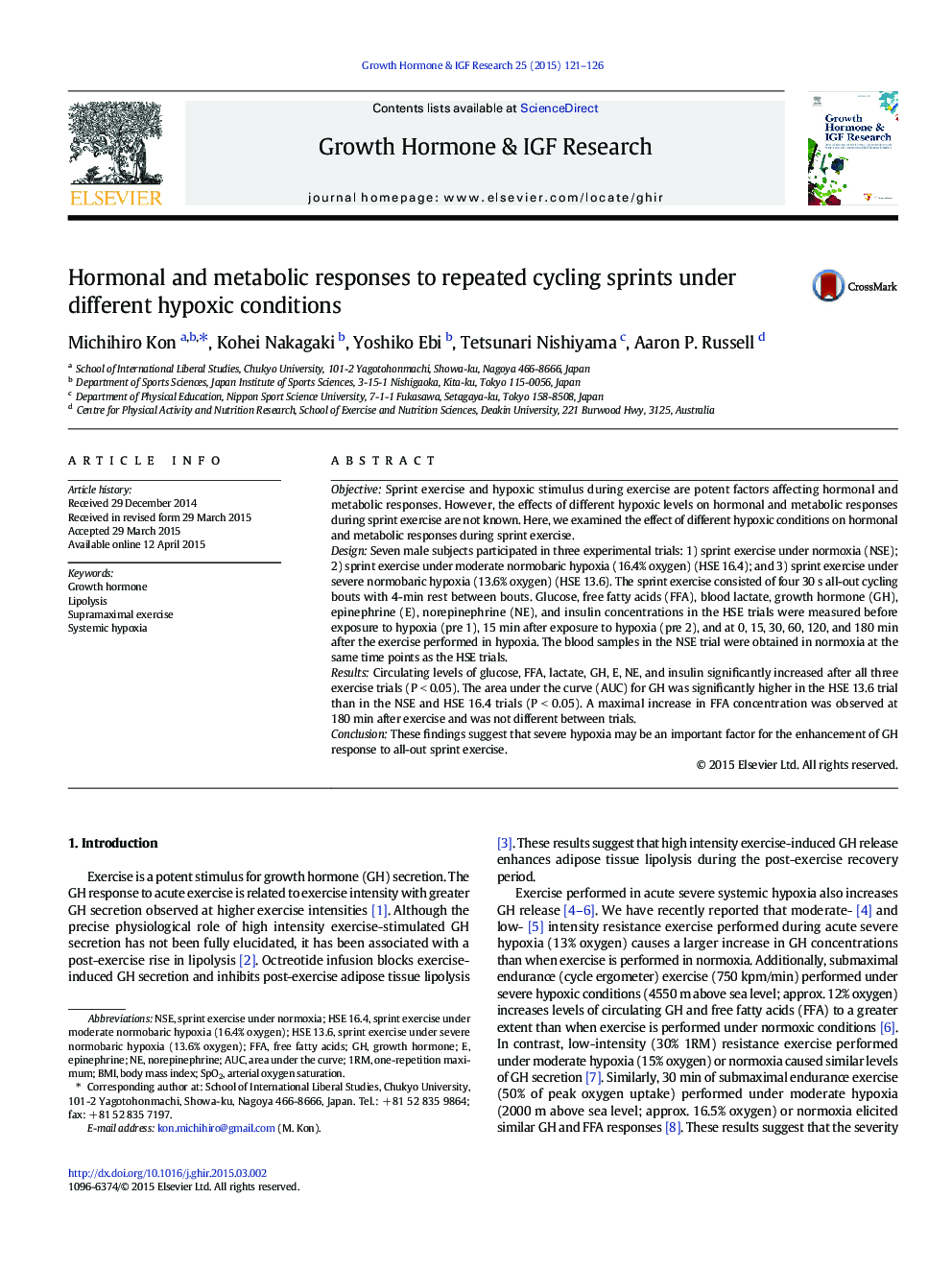| کد مقاله | کد نشریه | سال انتشار | مقاله انگلیسی | نسخه تمام متن |
|---|---|---|---|---|
| 2802594 | 1156694 | 2015 | 6 صفحه PDF | دانلود رایگان |
• We examine hormonal and metabolic responses to exercise in different hypoxic levels.
• Severe hypoxia evokes a greater growth hormone (GH) response to sprint exercise.
• Greater increase in GH by severe hypoxic exercise accelerates post-exercise lipolysis.
• Exercise-induced GH release is related to post-exercise increase in circulating free fatty acid.
ObjectiveSprint exercise and hypoxic stimulus during exercise are potent factors affecting hormonal and metabolic responses. However, the effects of different hypoxic levels on hormonal and metabolic responses during sprint exercise are not known. Here, we examined the effect of different hypoxic conditions on hormonal and metabolic responses during sprint exercise.DesignSeven male subjects participated in three experimental trials: 1) sprint exercise under normoxia (NSE); 2) sprint exercise under moderate normobaric hypoxia (16.4% oxygen) (HSE 16.4); and 3) sprint exercise under severe normobaric hypoxia (13.6% oxygen) (HSE 13.6). The sprint exercise consisted of four 30 s all-out cycling bouts with 4-min rest between bouts. Glucose, free fatty acids (FFA), blood lactate, growth hormone (GH), epinephrine (E), norepinephrine (NE), and insulin concentrations in the HSE trials were measured before exposure to hypoxia (pre 1), 15 min after exposure to hypoxia (pre 2), and at 0, 15, 30, 60, 120, and 180 min after the exercise performed in hypoxia. The blood samples in the NSE trial were obtained in normoxia at the same time points as the HSE trials.ResultsCirculating levels of glucose, FFA, lactate, GH, E, NE, and insulin significantly increased after all three exercise trials (P < 0.05). The area under the curve (AUC) for GH was significantly higher in the HSE 13.6 trial than in the NSE and HSE 16.4 trials (P < 0.05). A maximal increase in FFA concentration was observed at 180 min after exercise and was not different between trials.ConclusionThese findings suggest that severe hypoxia may be an important factor for the enhancement of GH response to all-out sprint exercise.
Journal: Growth Hormone & IGF Research - Volume 25, Issue 3, June 2015, Pages 121–126
